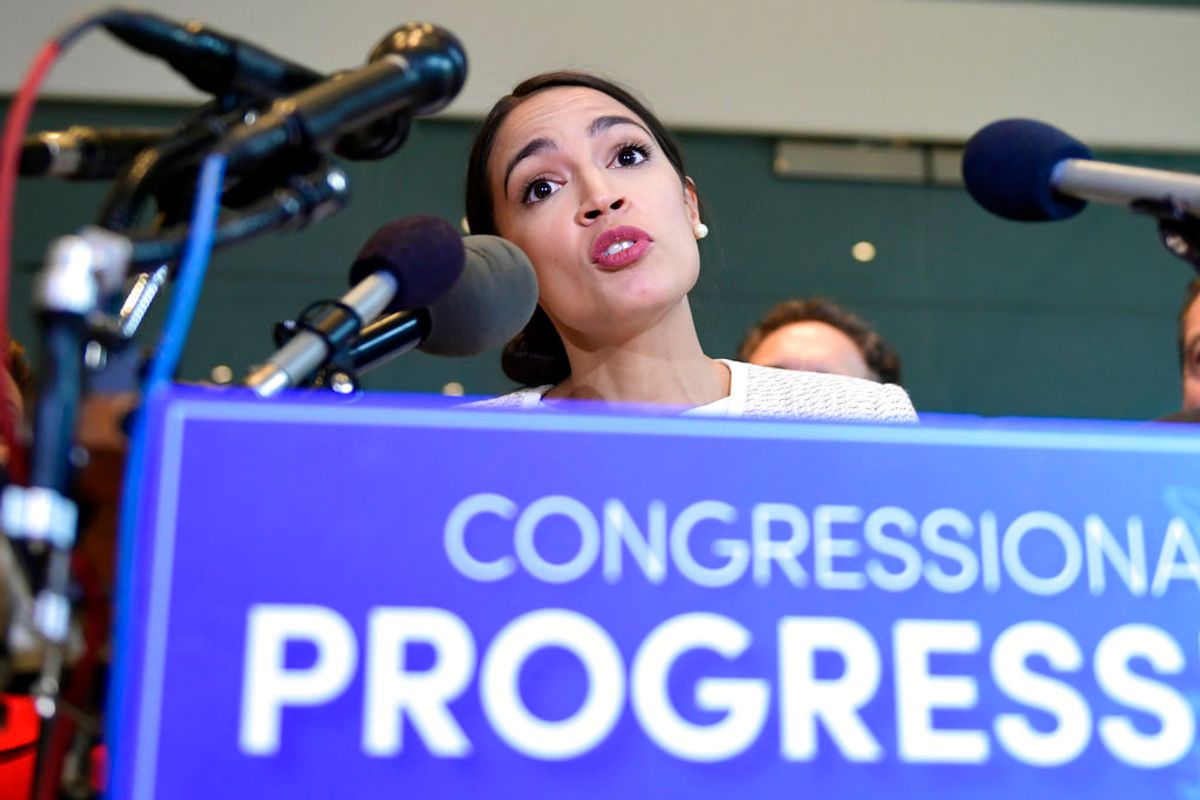On 4 January 2019, the CBS television news magazine program 60 Minutes released an excerpt from an interview between freshman Democratic U.S. Rep. Alexandria Ocasio-Cortez of New York and CNN host Anderson Cooper. In that excerpt, Ocasio-Cortez proposed that her ambitious environmental agenda known as the Green New Deal could be funded in part by higher tax rates on the super-wealthy, as reported by Politico:
Rep. Alexandria Ocasio-Cortez (D-N.Y.) is floating an income tax rate as high as 60 to 70 percent on the highest-earning Americans to combat carbon emissions ...
Ocasio-Cortez pointed out that in a progressive tax rate system, not all income for a high earner is taxed at such a high rate. Rather, rates increase on each additional level of income, with dramatic increases on especially high earnings, such as $10 million.
Anderson Cooper responded by proclaiming that such a notion was “radical”, a view held by many pundits as well. Others, such as Eric Levitz at New York Magazine made the case that Ocasio-Cortez's tax proposal would not have been radical in the past, as the tax rate on high-income earners before the Reagan administration was, in fact, 70%:
In 1980, taxing incomes above $216,000 (or $658,213 in today’s dollars) at 70 percent was considered a moderate, mainstream idea, even though wage inequality was much less severe, and supply-side economics had yet to be discredited.
The highest federal income tax bracket in 1980, which included those households earning $215,400 or more, had a marginal tax rate of 70%. A marginal tax rate of 70% does not mean that, for example, a person earning $10 million would pay $7 million to the federal government for income taxes. The tax bracket system is progressive, so not all of an earner's income is taxed at the highest level, as explained by the Center on Budget and Policy Priorities:
The federal income tax system is progressive, meaning that it imposes a higher average tax rate on higher-income people than on lower-income people. It achieves this by applying higher marginal tax rates to higher levels of income. For example, starting in 2018, the first portion of any taxpayer’s taxable income is taxed at a 10 percent rate, the next portion is taxed at a 12 percent rate, and so on, up to a top marginal rate of 37 percent.
The actual percentage of one’s income paid in taxes, known as a person’s effective tax rate, is also reduced through various exemptions, deductions, and assorted loopholes. In 1980, the average effective tax rate for highest-income ($200,000+) earners was just above 40%. By 2015, the average effective tax rate for the highest earners ($2 million+) was 27.5%. As noted by Vox, however, comparing earlier tax schemes to today’s system is not a simple proposition:
Historically, the United States used to have many more tax brackets, and the top marginal tax rates were extremely high. Under Eisenhower, the top earners paid a 91 percent marginal rate, falling to Ocasio-Cortez’s proposed 70 percent under Kennedy and Johnson, before falling to 50 percent after Ronald Reagan’s first big tax cut, and then down to 38 percent after the 1986 tax reform.
One big part of that story is that before 1986 the tax base was considerably narrower. Rich people used to have a lot more loopholes and deductions of which they could avail themselves. The 1986 law closed a lot of those loopholes, but [it] also cut the top rate.
But another part of the story is that there used to be more tax brackets. Right now a single person earning $550,000 a year pays the same marginal rate as a person earning 10 or 50 times as much. Under the old tax code, the top rate reserved its top rate for the super-duper rich.
When speaking specifically about the marginal tax rate for high-income earners, it is factual to state that the top marginal tax rate was 70% in 1980, before the nation’s experiment with “trickle-down economics” changed that system substantively.

